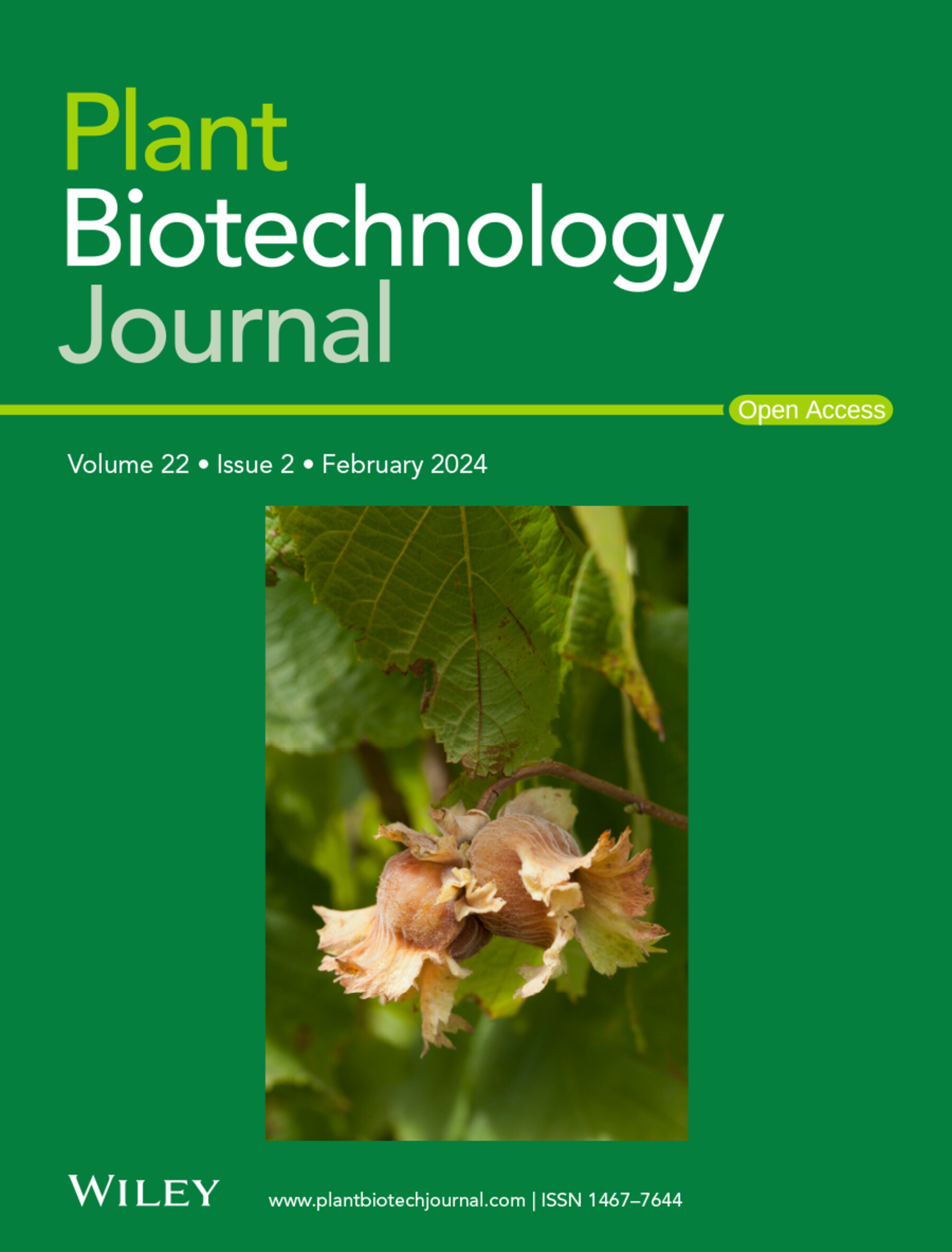ZmmiR1432-ZmCML21-ZmPMA2模块通过调节有机酸分泌影响玉米低磷耐受性
IF 10.5
1区 生物学
Q1 BIOTECHNOLOGY & APPLIED MICROBIOLOGY
引用次数: 0
摘要
磷在农业生产中是不可缺少的。全球粮食需求的增长要求开发磷利用率更高的作物。然而,协调植物磷利用效率的分子机制尚未完全确定。microrna是植物发育和生理过程的关键调节因子,已成为破译低磷酸盐(Pi)耐受性调控网络的关键靶点。在此,我们描述了ZmmiR1432在玉米中的调控作用,并阐明了其赋予低π耐受性的机制基础。抑制ZmmiR1432通过增加有机酸分泌显著提高对缺磷的耐受性,而过表达ZmmiR1432则有相反的效果。研究还表明,ZmmiR1432通过直接调节其靶基因ZmCML21来调节低π耐受性,ZmCML21是一种钙调素样蛋白编码基因,在有机酸分泌和Pi缺乏反应中也起关键作用。代谢组学和转录组学分析显示,ZmCML21的过表达严重影响了有机酸分泌,并改变了柠檬酸循环(TCA循环)相关基因的表达。此外,ZmCML21直接与质膜H+- atp酶(ZmPMA2)相互作用。ZmPMA2过表达对ZmmiR1432过表达植株和ZmCML21过表达植株均有表型影响。总之,我们的研究结果揭示了一个ZmmiR1432-ZmCML21调节模块,该模块通过调节ZmPMA2活性来控制低π耐受性,从而影响有机酸分泌并最终决定π的利用效率。这些结果为通过分子育种和基因工程提高玉米磷利用效率提供了机理和可操作的遗传靶点。本文章由计算机程序翻译,如有差异,请以英文原文为准。
ZmmiR1432-ZmCML21-ZmPMA2 Module Affects Maize Low Phosphate Tolerance via Regulating Organic Acid Secretion.
Phosphorus is indispensable in agricultural production. The growing global demand for food necessitates the development of crops with enhanced phosphorus utilisation efficiency. However, the molecular mechanisms coordinating phosphorus utilisation efficiency in plants remain incompletely characterised. MicroRNAs, pivotal regulators of plant developmental and physiological processes, have emerged as key targets for deciphering the regulatory networks underlying low phosphate (Pi) tolerance. Herein, we delineate the regulatory role of ZmmiR1432 in maize and elucidate its mechanistic basis in conferring low Pi tolerance. Suppression of ZmmiR1432 markedly improved tolerance to Pi deficiency via enhanced organic acid exudation, whereas its overexpression had the opposite effect. It is also indicated that ZmmiR1432 regulates low Pi tolerance through direct modulation of its target gene, ZmCML21, a calmodulin-like protein coding gene that also plays a key role in organic acid secretion and Pi-deficiency response. Metabolomic and transcriptomic analyses revealed that overexpression of ZmCML21 severely affected organic acid secretion and altered the expression of genes involved in the citrate cycle (TCA cycle). Furthermore, it is demonstrated that ZmCML21 directly interacts with plasma membrane H+-ATPase (ZmPMA2). Overexpression of ZmPMA2 phenocopied the ZmmiR1432 knockdown plants and ZmCML21 overexpression plants. Collectively, our findings uncover a ZmmiR1432-ZmCML21 regulatory module that governs low Pi tolerance by modulating ZmPMA2 activity, thereby influencing organic acid secretion and ultimately determining Pi use efficiency. These results provide mechanistic insights and actionable genetic targets for improving Pi use efficiency in maize through molecular breeding and genetic engineering.
求助全文
通过发布文献求助,成功后即可免费获取论文全文。
去求助
来源期刊

Plant Biotechnology Journal
生物-生物工程与应用微生物
CiteScore
20.50
自引率
2.90%
发文量
201
审稿时长
1 months
期刊介绍:
Plant Biotechnology Journal aspires to publish original research and insightful reviews of high impact, authored by prominent researchers in applied plant science. The journal places a special emphasis on molecular plant sciences and their practical applications through plant biotechnology. Our goal is to establish a platform for showcasing significant advances in the field, encompassing curiosity-driven studies with potential applications, strategic research in plant biotechnology, scientific analysis of crucial issues for the beneficial utilization of plant sciences, and assessments of the performance of plant biotechnology products in practical applications.
 求助内容:
求助内容: 应助结果提醒方式:
应助结果提醒方式:


